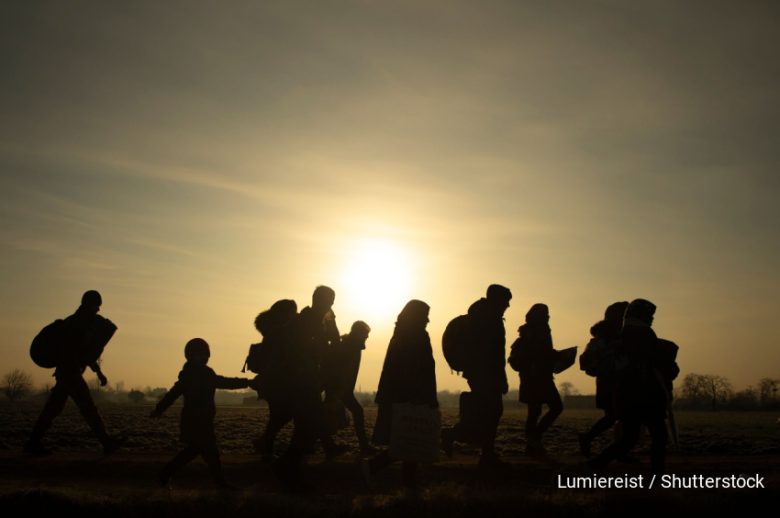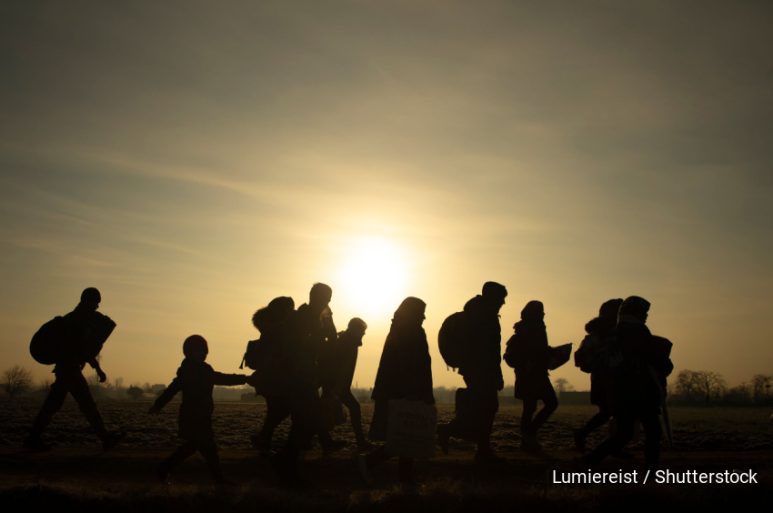By Hannah Ryan
On 15th December 2022, the day at least four people drowned in the English Channel following another ‘small boat’ tragedy, the front page of the Daily Mail was emblazoned with the headline ‘Migrant Boat Capsizes’. The accompanying article reflected on the UK government’s stringent policy towards people crossing the channel to seek asylum, but not – of course – on the complicity of the newspaper media in building a context within which such a policy is legitimised. The following day, it was hard to find any mention of this tragedy on the newspaper’s website.
The fact that the British press has played a defining role in the country’s anti-immigrant climate has been widely reported. Less well understood, however, is the role of images within this. Yet images matter – in the widely reported case of Alan Kurdi, the little Syrian boy found dead on a Turkish beach in 2015, it was the image of Kurdi that impacted so heavily on public opinion about refugees. This image shifted – for a limited time, at least – the public mood towards a more sympathetic position on the plight of Syrian refugees. Meanwhile, the controversial ‘Breaking Point’ poster presented by Nigel Farage’s UK Independence Party (UKIP) became one of the most talked about parts of the 2016 Brexit campaign. This poster was reported to the police for inciting racial hatred, and compared to Nazi propaganda. Images are not neutral – they are captured and framed in a particular way by a photographer, before being selected and edited for inclusion to convey a particular idea about refugees.

My recently completed PhD research analysed 377 images of refugees and people seeking asylum taken from the online editions of four UK newspapers (the Daily Mail, the Telegraph, the Mirror and the Guardian) over a three year period between January 2018 and December 2020. The findings of this research reveal a gendered and racialised othering of refugees and people seeking asylum through newspaper imagery across these publications.
Black African and Middle Eastern men – overwhelmingly the dominant focus of the coverage – were subject to criminalisation through the images. They were photographed using ‘illegal’ forms of travel, such as small boat crossings, were presented as the subjects of ‘mugshots’, and were photographed with police, border guards and security personnel in locations such as detention centres and court rooms. This coverage is in stark contrast to the recent more sympathetic coverage of predominantly White Ukrainian refugees. The photographs of men travelling towards the UK create a climate of fear and apprehension about these groups, while the mugshots and police presence are used as proof that these fears are justified. These methods justify an increasingly restrictive border regime by representing refugees as a dangerous and criminalised invading force.
In contrast, Middle Eastern and Black African women and children are represented as innocent and vulnerable. However, this is on the condition that they are passive, distant and contained. Predominantly, these groups are photographed passively waiting in refugee camps – with those based in camps often viewed as more ‘genuine’ than refugees on the move. The newspaper coverage often includes photographs of children in bright clothing and playing with toys, portraying ideas of childhood and innocence, while women are photographed sitting silently and/or holding children. These ‘genuine’ refugees in refugee camps are sometimes photographed with White celebrities and aid workers, and charity symbols are often visible in tents which adds to the idea that these refugees are genuine and innocent.
This visual portrayal of refugees was common across the four newspapers studied. While the Guardian’s coverage tended to be more positive, it constructed this positivity through a focus on women and children as victims, and so played into the gendered and age-based framing of vulnerability and innocence. In all cases, refugee voices and personal experiences are missing from these newspaper stories and refugees are talked about rather than able to talk for themselves.
This racialised and gendered portrayal of refugees is a continuation of the colonial practice of constructing men of colour as dangerous, uncivilised and barbaric, and women and children of colour as submissive, vulnerable and in need of saving – in their own, ‘uncivilised’ country. Meanwhile White Westerners from former colonising countries are portrayed positively, either as the saviours of the passive Middle Eastern and Black African women and children through celebrities and aid workers in refugee camps or as the protectors of Europe, and the UK, through policing the movement and behaviours of the active Middle Eastern and Black African men who are on the move. While the British empire used these tactics to justify interventions in countries in the Middle East and Africa, the newspaper media today uses these tropes to construct a context in which ever harsher border controls are justified to restrict the movement of people from these very same countries. In so doing it is a contemporary colonial actor, maintaining systems of power which exclude the subjects of colonisation from the riches of empire which underpin British society and have impoverished former colonies, and complicit in the exposure of refugees to – often fatal – harm.
Photo Credits: Lumiereist / Shutterstock

